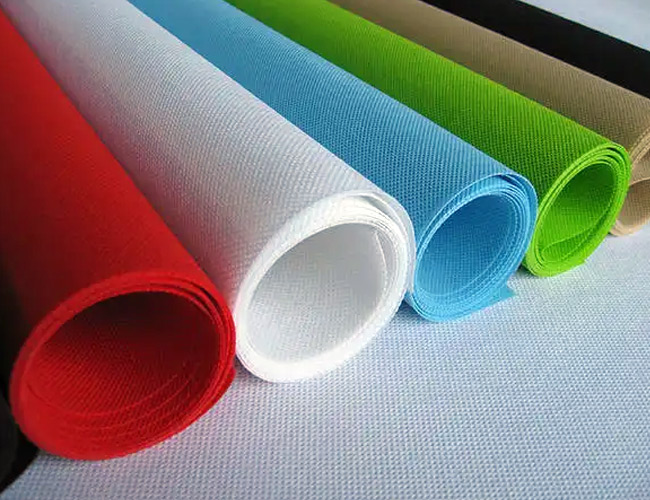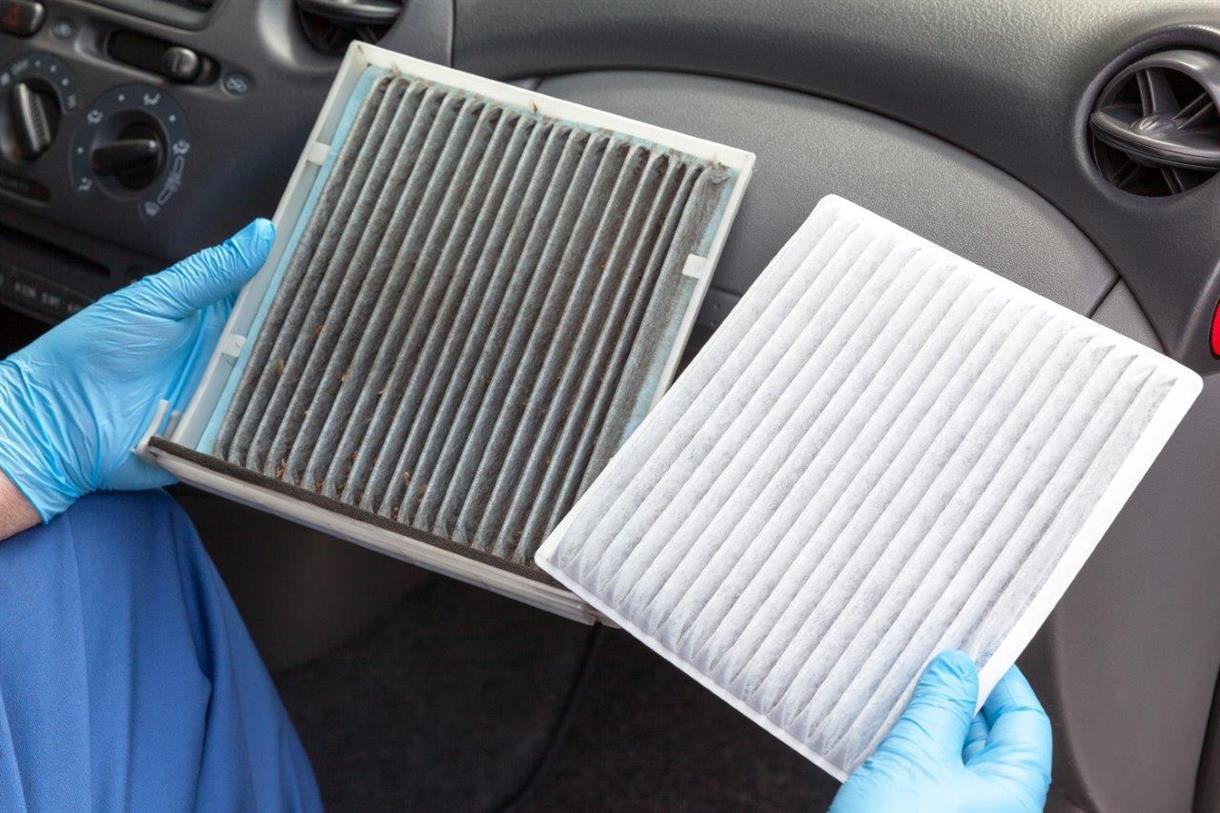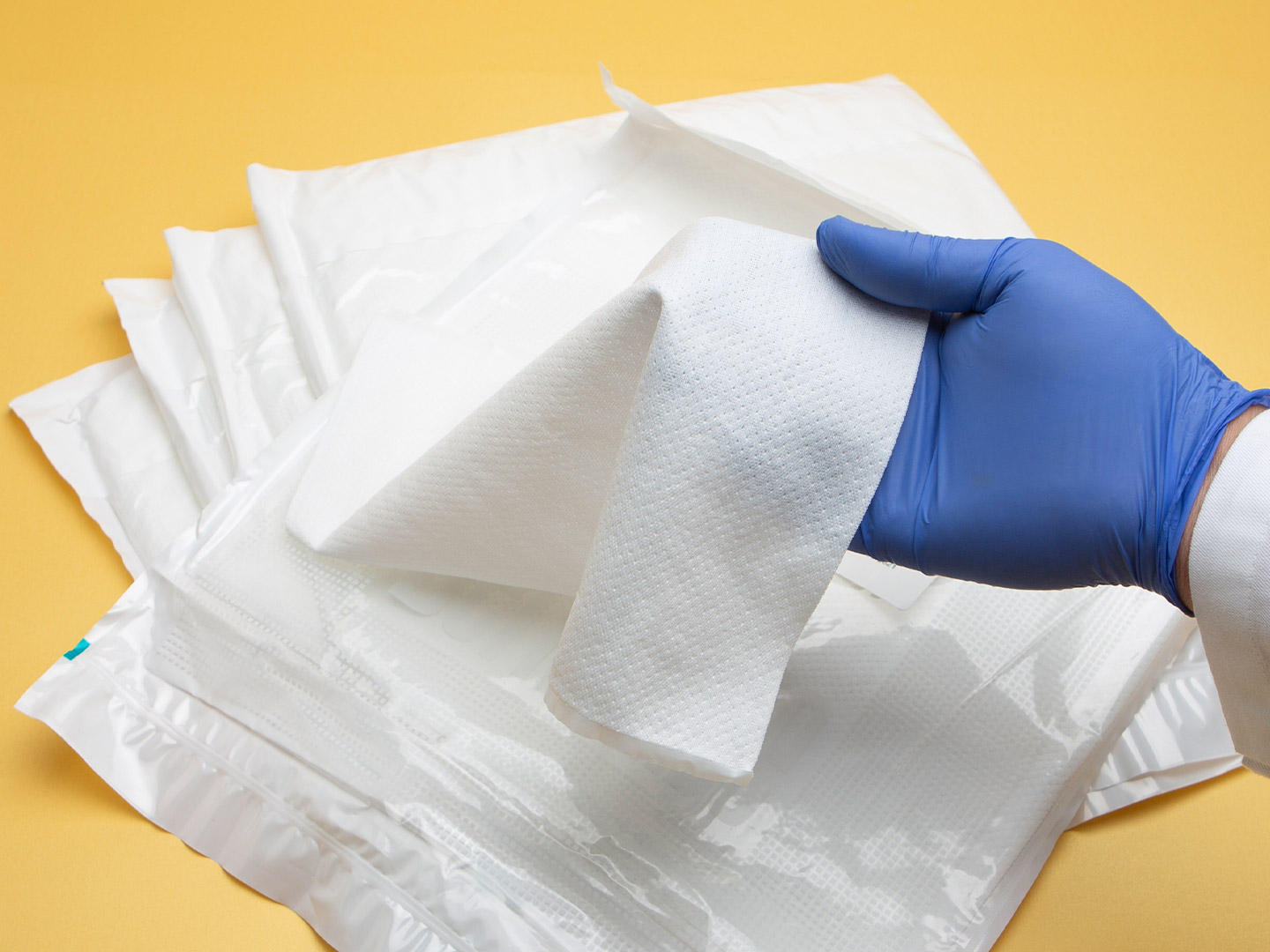
Nonwovens are textiles consisting of layers of fibers. The fiber layer of nonwoven is a thin web of fibers made directly from carded webs or by spinning method, and the fibers are haphazardly oriented and laid out. Nonwoven spinning process is divided into: dry method, wet method, polymer extrusion method.
It is a fabric that is formed without spinning and weaving, but simply by orienting or randomly arranging textile short fibers or filaments to form a fiber network structure. Then it is reinforced by mechanical, thermal bonding or chemical methods. It directly uses polymer slices, staple fibers or filaments to form new fiber products with soft, breathable and flat structure through various fiber net forming methods and consolidation technology. It also has the characteristics of short process, fast production speed, high yield, low cost, wide application, and many sources of raw materials.
Raw materials for nonwovens.
Nonwoven fabrics are made of polypropylene, polyester, viscose, acrylic, nylon, cotton, ramie, wool, mulberry silk, acetate, and others.
The industrial production of nonwovens is almost 100 years old. It was a British company that first designed and built a prototype needle-punch nonwoven. The real modern production of nonwovens industry started only after the World War II. With the end of the war, the world was in need of all kinds of textiles and the demand for them was increasing.
Under this circumstance, nonwoven fabric has gained rapid development and has roughly gone through four stages so far.
The first stage is the budding period of modern nonwoven production. During this period, only a few countries, such as the United States, Germany and the United Kingdom, were researching and producing nonwoven fabrics, and their products were mainly thick wadding mat type nonwoven fabrics.
The second stage is the growth period of nonwoven fabrics. Nonwoven technology was rapidly transformed into commercial production.
The third stage is the rapid development of nonwovens. During this period, the production of nonwovens continued to grow at a high rate, while many substantial advances were made in nonwoven technology, and the production area of nonwovens continued to expand. By this time, a new industry with a production volume of 20,000 tons of nonwovens and an output value of more than 200 million USD had been formed worldwide. This is a new industry based on the collaboration of petrochemical, plastic chemical, fine chemical, paper industry and textile industry, and its products have been widely used in various sectors of the national economy.
The fourth stage is the solid development period. During this period, spunlace and meltblown nonwoven technologies were rapidly promoted and applied in production. Machinery manufacturers have also introduced to the market complete sets of spunlace and meltblown nonwoven production lines. Dry nonwoven technology has also made important progress in this period. Hydroentanglement nonwovens were put into commercial production. Foam impregnation bonding, thermal transfer bonding and other technologies were promoted and applied. China started to study nonwovens in 1958, and the first nonwoven factory in China was established in Shanghai in 1965. China's non-woven fabric manufacturing has developed rapidly in recent years, but there is still a gap between the quantity, variety and quality compared with developed countries.
Light weight, soft, absorbent and breathable, non-toxic and non-irritating, good toughness, durable, smooth and soft. Compared with cotton fabric, non-woven bags are easy to shape and low cost.
1 Baby diaper
Baby diapers are a highly competitive product for nonwoven fabric manufacturers. In North America and Western Europe, the disposable baby diaper market is dominated by two groups, Procter & Gamble and Kimberly-Clark, with the former appearing to be showing stronger growth. The fierce competition in the market has resulted in manufacturers paying more attention to new product development and improving the quality of their brands. Manufacturers are paying more attention to the intrinsic quality of their products, which have greatly improved their ability to absorb and retain moisture so that babies' skin is always dry and never irritated. Thus, it seems that manufacturers of baby diapers have woken up to the fact that while improving the quality of their products, by changing the design (style), shape, color, size and composition of diapers, they will be able to enhance the competitiveness of their products and possibly develop more products to meet the needs of consumers and thus capture a larger market.
2 Sanitary napkins for women
Related to baby diapers is the women's sanitary napkin industry. The four companies with the largest share of the international market are: Johnson & Johnson's Personal Product with 26%, K-C's Kotex with 24%, P & G with 21%, and PrivateLabel's products with 15%.
3 Filtration materials
Filtration materials provide an arena for the nonwoven industry to develop its skills. By exploiting the potential of raw materials and adopting appropriate processing methods, various fibers or chemical additives can be arranged in a certain shape to make light, heavy, wide, narrow, single-layer, laminated and other special forms of filtration materials. They can be rigid, flexible, moldable, drawable, antibacterial, crush-resistant, and other filter materials with a variety of properties.
4 Geotextiles
Geotextiles have the functions of separation, filtration, drainage and reinforcement, and are mainly used for coastal berms, building maintenance, highway and railroad soil consolidation. At present, the demand for geotextiles in the international market is growing fast, and the demand is growing steadily at an average rate of 10% per year. Among all geotextiles, woven fabrics and nonwoven fabrics have the highest production and the most extensive use, accounting for 36% and 45% of the demand for geotextiles respectively. Spunbond geotextiles are mainly made of polyester, polyamide and polypropylene. The main raw materials of needle-punched geotextiles are polyester staple fiber, polypropylene staple fiber and polypropylene/polyethylene bicomponent fiber, etc.
5 Medical nonwoven fabrics
Medical nonwoven fabrics mainly include medical protective clothing, protective masks, surgical gowns, surgical caps, bed sheets, cushions and dressing materials. Medical nonwoven products tend to use one or two nonwoven technologies for processing.
6 Automotive nonwovens
The automobile industry has been in the stage of rapid development, and the market demand for textiles for automobiles is increasing year by year. For example, the consumption of textiles for the automotive industry in the United States is 500 million square yards, of which nonwoven fabrics account for about 40% of the total. From the front of the car muffler liner to the carpet inside the car, etc. can be made of non-woven fabrics.
7 Other types of nonwoven fabrics
(1) Non-woven oil-absorbing material. Meltblown polypropylene nonwoven fabric is a new type of efficient and pollution-free oil-absorbing material developed in recent years, which has the characteristics of hydrophobic and oleophilic. The density of its raw materials is small, lighter than water, almost non-absorbent, oil-absorbing performance is very strong. It is an ideal oil-absorbing material because it is not harmful to people, animals and the environment. Non-woven oil-absorbing materials mainly include oil-absorbing cords, oil-absorbing sheets, oil-absorbing rolls, oil-absorbing cotton and oil-absorbing pillows, etc.
(2) Non-woven insulating materials. Usually use the ratio of thermal resistance coefficient and production cost as an indicator to measure the comprehensive performance of insulation materials. Practice has proved that glass fiber nonwoven is safe for insulating materials and has a good market prospect.
(3) Non-woven reinforcing materials. Glass fiber mat can be used as a non-woven roof reinforcement material. Usually glass fiber mat using short-cut fibers using wet forming process for processing. Compared with cellulose fiber mat, it has the characteristics of waterproof, mold, flame retardant, etc. The length of the roof cover is long, the load capacity is large, the weight is light, and the construction is easy, so it is widely appreciated.
We have been operating nonwoven fabrics for nearly 20 years and have become one of the most complete nonwoven fabric types in China, with mature quality control and international logistics network.
1 Meltblown nonwoven fabric
Meltblown nonwoven process: Polymer is fed into the melt and extruded to form fibers that are cooled into a web reinforced into cloth.
Meltblown as filtration material: It can make very high quality filtration material, mainly used in air filtration, water filtration, oil filtration, oil-water separation and many other fields.
Meltblown as oil-absorbing material: Since PP hardly absorbs water but has good lipophilicity and meltblown cloth has high porosity and large specific surface area, so meltblown cloth has good oil-absorbing performance. After experimental measurement, it can absorb oil which is 17~20 times larger than its own weight.
Meltblown used as warm material: Meltblown nonwoven fabric is the best material for thermal insulation clothing due to its particularly fine fiber diameter, small pore size, high porosity, soft hand feel, light weight and very good wind resistance and breathability. After national testing units to determine the same weight of clothing temperature materials, meltblown cloth insulation effect is the best.
At present, G&F's meltblown nonwoven fabric is mainly used as mask filter material, with a gram weight of 20-25 GSM, requiring a bacterial filtration efficiency (BFE) in the range of 90%-99%, depending on the customer's requirements.
2 Spunbond Nonwoven Fabric
Spunbonded nonwoven fabrics are mainly classified according to different materials and processes:
1.PP SPUNBONDED NONWVOEN FABRIC Melting temperature: about 150℃
2. SS NONWOVEN FABRIC, produced by double nozzle equipment, double laying web in one time.
3. SMS NONWOVEN FABRIC, produced by triple nozzle machine, triple lay-up in one time.
4. SMMS, SSMMS, produced by four and five nozzle machines, one time forming.
5. PET SPUNBONDED NONWOVEN FABRIC Melting temperature: about 260℃.
PP/PE BICOMPONENT SPUNBONDED NONWOVEN FABRIC is a nonwoven fabric composed of PP/PE, PP/PET and other fibers with a skin-coated structure.
7. PLA NONWOVEN FABRIC, made of all plant fibers as raw materials, is truly degradable environmental protection material.
Commonly used grammage range: PP spunbond nonwoven: 10-180GSM
SMS, SMMS nonwoven: 15-65 GSM
PET spunbond nonwoven:15-260GSM
Product characteristics:
PP (SS, SMS, SMMS etc.) is a by-product of crude oil, so the non-woven fabric itself has the characteristics of oil absorption and water repellency, UV resistance and heat resistance is worse than other plastic materials. PP is internationally recognized as an environmentally friendly material, non-toxic, recyclable, high elongation, good stability and permeability, the price is lower than other plastics, the melting temperature is also low, so the production cost is low.
It is commonly used in the post-treatment of PP, SS, SMS, SMMS and other spunbond nonwoven fabrics: hydrophilic, extra soft, anti-static, anti-bacterial, anti-aging, waterproof, anti-alcohol and anti-plasma, etc.
Main applications: non-woven bags, packaging materials, disposable medical supplies (masks, caps, shoe covers, protective clothing, surgical cavity cloth, wrap cloth, etc.), disposable sanitary materials (diaper leak-proof edge, etc.), luggage cloth, furniture materials, agricultural films, geotextiles, etc.
3 Thermobonded nonwoven fabric
Thermally bonded nonwovens include both hot-rolled and hot-air.
Among the hot-rolled nonwovens, the all-polyester hot-rolled nonwoven is mainly used for garment interlining, where EVA or LDPE adhesive powder is sprinkled on the fabric surface for bonding. The two-component (ES) hot-rolled is mainly used for sanitary materials.
Hot air bonded products usually use ES material, which has high fluffiness, good elasticity, soft feel, warmth, breathability and water permeability, but its strength is low and easy to deform. With the development of the market, hot air bonded products with their unique style are widely used in the manufacture of disposable products, such as baby diapers, adult incontinence pads, fabrics for women's hygiene products to napkins, bath towels, disposable tablecloths, etc. Thick products are used to make high-density hot melt bonded products such as cold-proof clothing, bedding, baby sleeping bags, mattresses, sofa cushions, etc. They can be used to make filter materials, sound insulation materials, shock absorbing materials, etc.
4 Sutured nonwoven
The raw material of sewn nonwoven fabric is selected from high quality plastic bottle pieces, which are processed to form RECYCLED FIBER, and then through the nonwoven fabric process which is sewn and knitted, using 80%-95% recycled polyester staple fiber and 5%-20% high quality polyester filament via knitted coil structure on the fiber web, yarn layer, non-woven materials (such as plastic sheet, plastic thin metal foil, etc.) to reinforce their combination to RECYCLEDPET nonwoven fabrics are produced.
According to the finishing, the products are divided into AS soft (better glue, soft texture and better tension after shaping), AM neutral (slightly worse than AS), AH (hard) , PH (hard)l. Thickness: 0.35mm-1.2mm. Our company's thinnest has reached 0.35mm (the finished products with glue, not semi-finished products), and the lowest gram weight of finished products can reach 75G per square meter, and the width can be made according to the needs of the customer's width.
5 Hydrophilic nonwoven fabric
Hydrophilic nonwoven fabric is a kind of spunbond nonwoven fabric. It is called hydrophilic nonwoven fabric when hydrophilic agent is added in the production process of nonwoven fabric or hydrophilic agent is added on the fiber during the fiber production.
The development of fiber raw materials and processing technology has not only improved the quality of nonwoven products, but also expanded the range of applications, especially the combination of new functional fiber materials and modern production methods, which has expanded the application areas of nonwoven fabrics. In line with the principle of coordinated development of economy, ecology and society, the market prospect of nonwoven products will be more broad.
All Rights Reserved: https://www.groupgf.com/info-detail/https://www.groupgf.com/info-detail/what-is-non-woven-fabric
Copyright Notice: This is an original (translated) article from G&F Group Inc., please indicate the source from G&F Group Inc.. If there is any infringement, please contact us first.
 Nonwovens in daily life ----- filtration
Nonwovens in daily life ----- filtration
 Nonwovens in daily life ----- automotive
Nonwovens in daily life ----- automotive
 What is SAP – superabsorbent polymers
What is SAP – superabsorbent polymers
 The Future of Global Nonwoven Wipes to 2029
The Future of Global Nonwoven Wipes to 2029